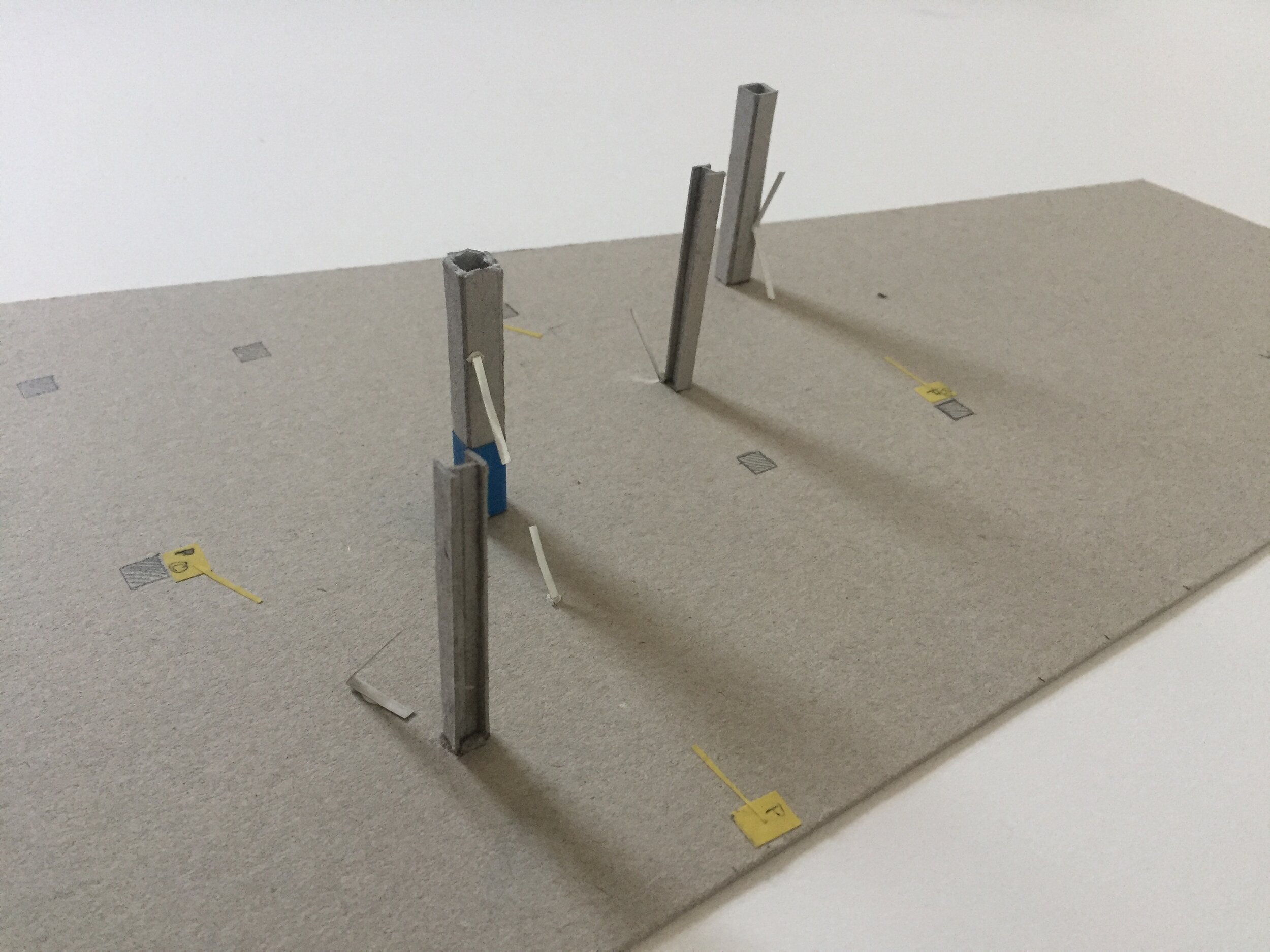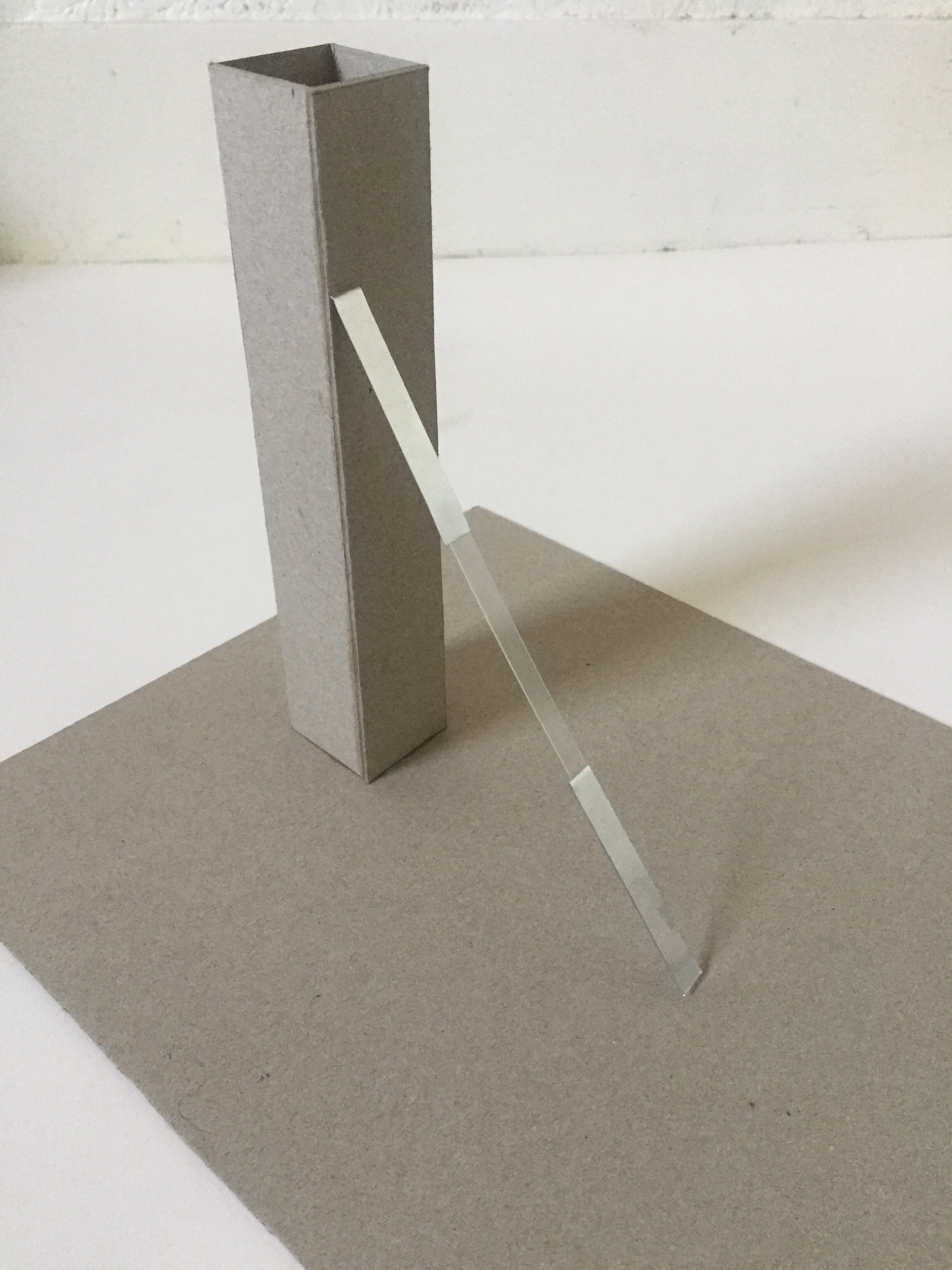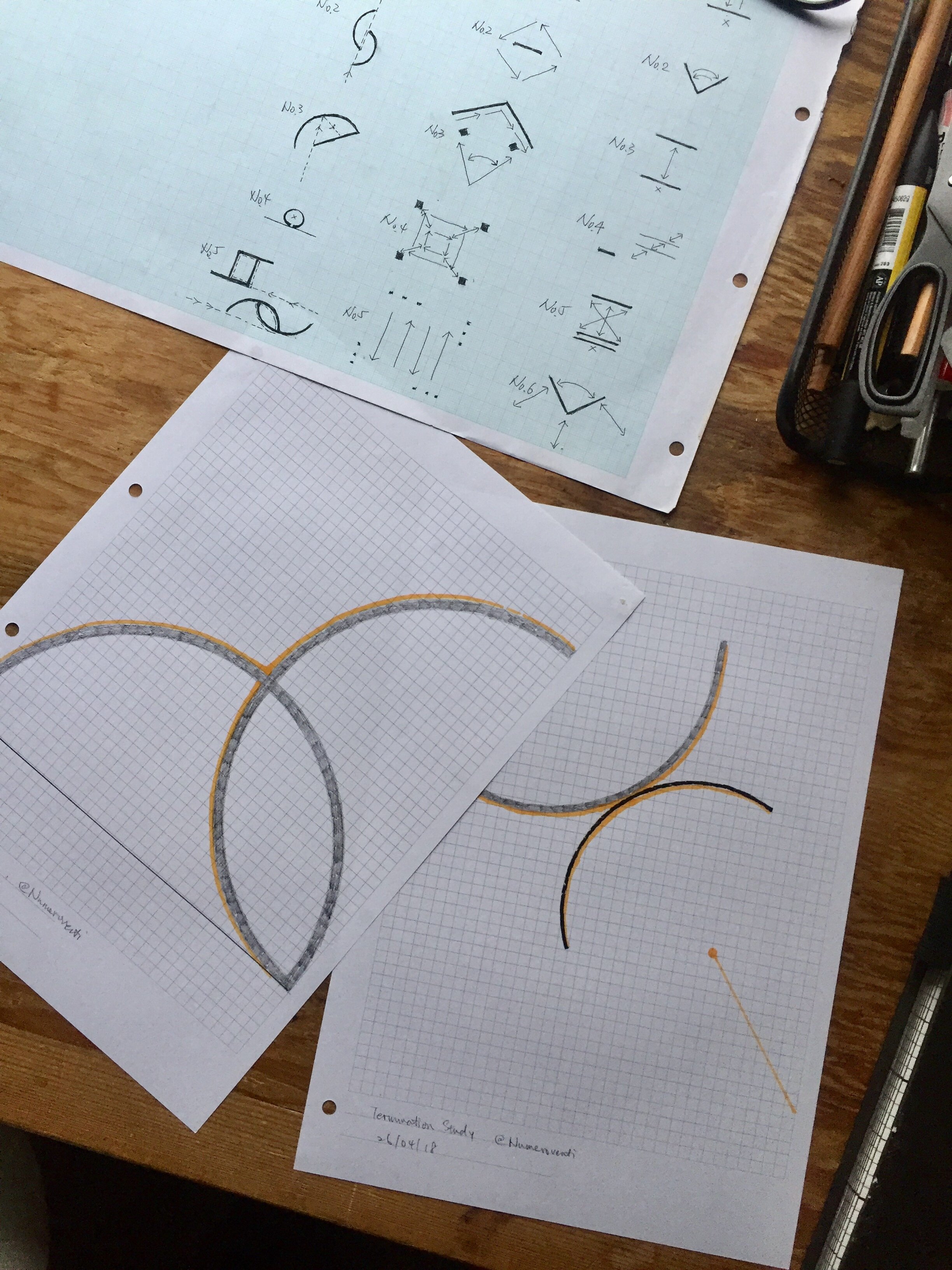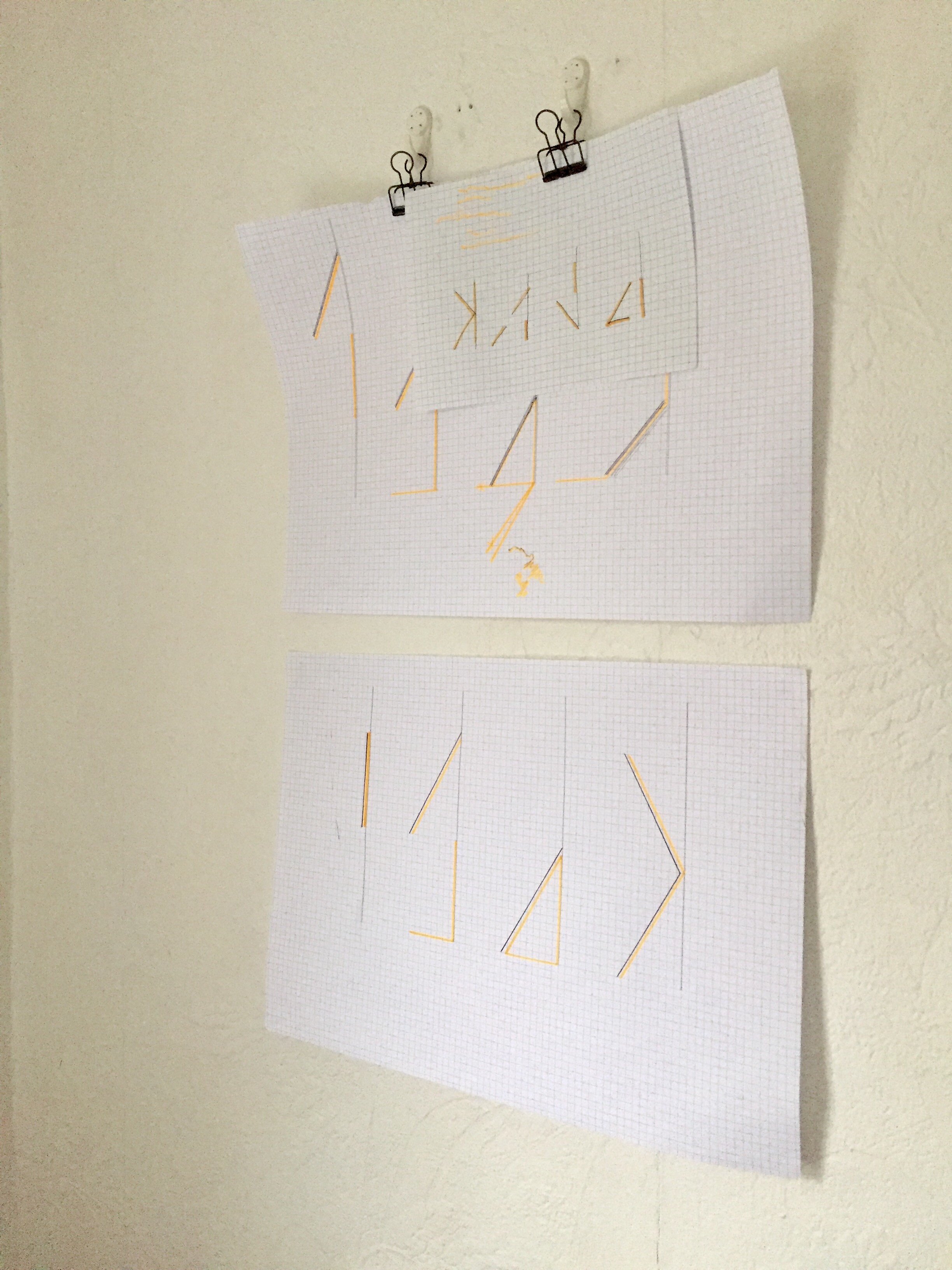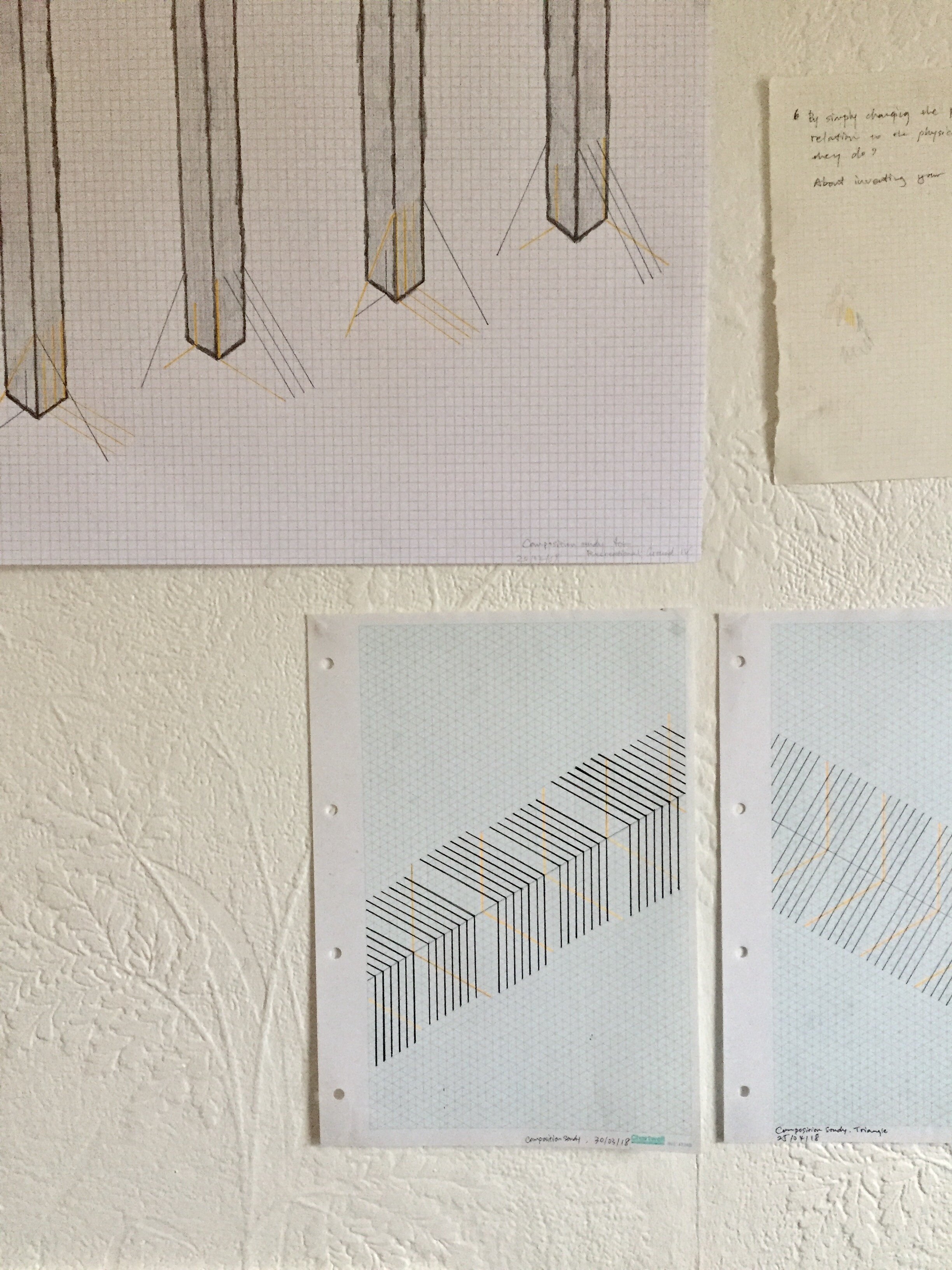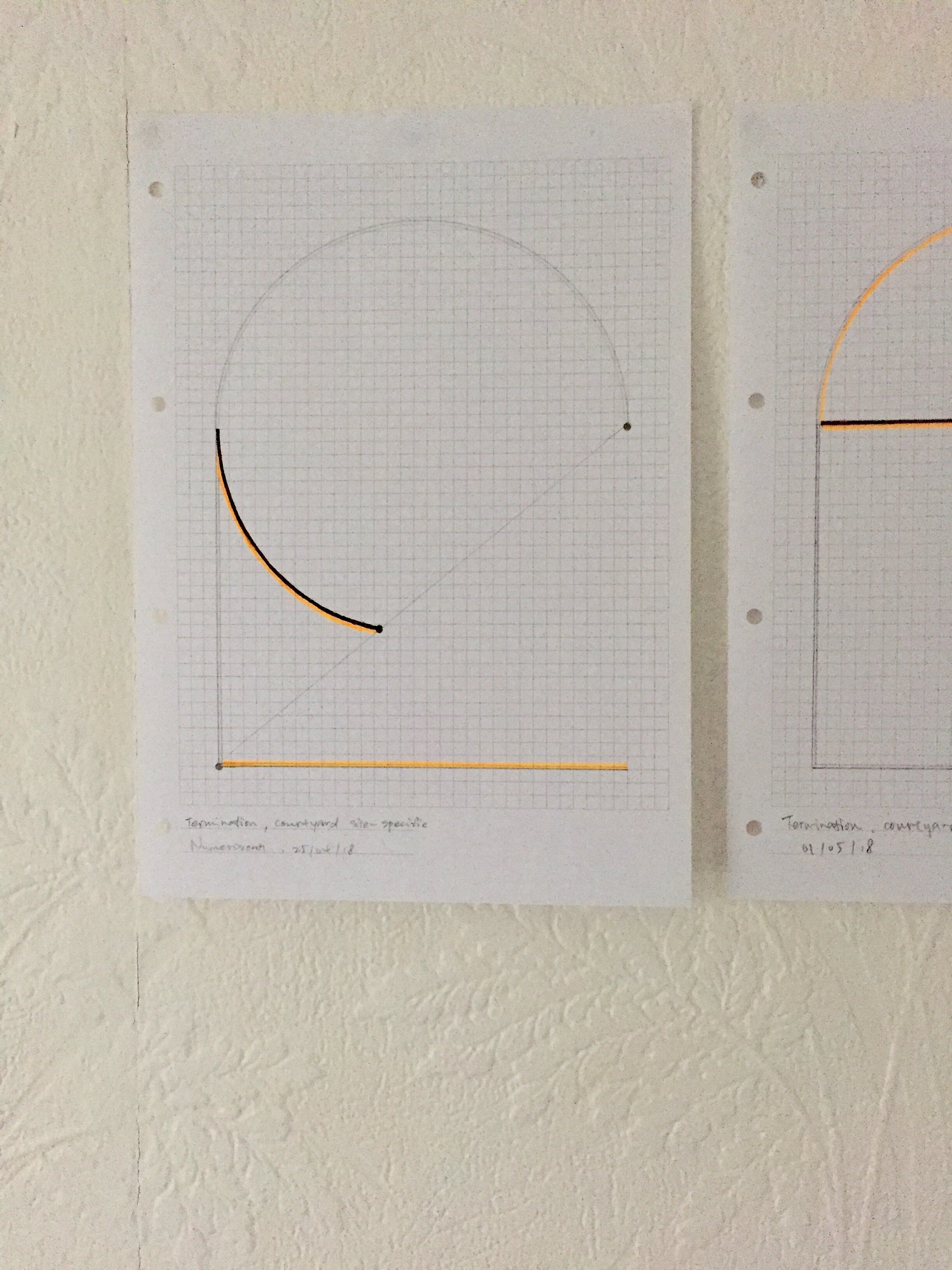Dori Deng

I have been playing with the idea of a virtual studio visit for a while now because I have probably spent two working days just travelling to and from studios in London (and as you might know, most of them are actually in South London where I live). While I absolutely love visiting artists in their studios, I also had to think about how I can keep writing about these visits and presenting the artist in her studio and talking about her practice, while I have more than one job and with my impending move from London to Frankfurt (yes, it’s happening!). And while I am extremely excited to meet new artists and visit studios in Germany, I wanted to find a way to not limit myself to the one city I live in. So, here we go!
Dori’s practice provides the perfect setting for the first virtual studio visit. We ‘meet’ on FaceTime at 7:15pm on Monday evening and we dived right into it. Her studio is a separate room in the house where she lives in North East London. Her studio is filled with projectors, all different kinds of materials, and studies on paper. Her work is site specific and that’s why her studio serves as a hub for ideas and experimenting, rather than production. Although, similar to practices in architecture, Dori examines her ideas in different ways and explores the works from two-dimensional drawing to three-dimensional isometric drawings, small scale models and larger ones, which she produces in her studio.
The main medium of her work is light. She is fascinated by the idea of structures and duration and examines the notions through her installations. Most of the time the light she uses is produced artificially. From time to time and depending on the location and in situ conditions she also manipulates the way the natural light falls into the room to become a material in her installations. For installations that use artificial light, she originally used digital projectors, but she quickly realized that the data translation of a digital projector didn’t provide her a pure enough medium to allow her to work with the structure and quality of light allow her to manipulate the source the way she wants to. Digital projectors always translate data, so there is no light that is not data. This also means that when she identifies an area that should not have light projected to it, a digital projector is unable to not project light, but will project the colour black (in the form of light). She showed me a whole corner of her studio that has different brands and sizes of analogue projectors. The Kodak 5000, she tells me has a timer, which allows her to time the duration between each slide and that allows her to control and manipulate the duration of her work and the way the light hits the installation on yet another level. She shows me a slide that she has manipulated, as she does, with different kinds of material such as paper and gels - some of them see-through, reflecting or completely opaque - to only let through the light of the projector in the two slits that she has identified for this slide, basically making a physical barrier for the light and stop it from getting through.
She accredits a lot of her practice to her work in theatres and operas, calling it theatre tricks. For the past 10 years, Dori has worked on large scale projections for opera houses, which has provided her with an extensive technical background. She says that similar to her own practice, in large scale theatre projections, you can’t know 100% how your planning and calculations will turn out until you physically project it.
For the exhibition at Recreational Grounds (15.1.-17.1.19) she faced a different challenge to work within the settings of the space. There is no electricity in the space, so using projectors was not a possibility and she had to work with the natural light in the space. And that includes thinking about the light at different times of the daytime in London in March. Her work though doesn’t just accept chance and hope for the natural light to do what it should. To make up for the lack of control when it comes to the light, she uses materials in the structure, that will make sure the light is caught and reflected back. So, in this case, the main medium is still light, but she uses another material to produce the light in her installation.
The idea for this work has been developing for a while and started with a piece that she did at a residency in Florence. Fascinated by the architectural structures in the Palazzo, the main idea behind this work was a reflection of the rhythm of the space. But because her work is responsive to the space it sits in, it is only the underlying concept of exploring the rhythm of a space that connects these two installations, which both, independently, have to respond to the respective space. To investigate how the installation might work in the space at Recreational Grounds, Dori has built a model from clear poles in her studio and uses a smaller projector from Soviet times to mimic how the light might fall onto them and break into prisms.
Possibly the biggest part of Dori’s studio practice are drawings. ‘It’s a lot like an architectural practice’, she says. Her spatial investigation starts by being in the space and examining it. During her residency in Florence, she lived in the same space that she produced the work, which was also the space that the work was installed in at the end. So, she spent a lot of time exploring and discussing different ideas and concepts within the space. Once the space is identified, Dori tells me that her understanding of the existing structure will have changed already. Then the studio becomes important. The root of all the installations are drawings. After some sketches and studies, the ideas are translated onto Isometric paper, which allows her to examine the idea in a third dimension (at 45 degrees).
Some of the sketches she makes for exercise though, like the ‘light installation’ dangling in a drawing of a round arch at the Palazzo, which she would never have been allowed to install because of all the restrictions of the listed building. As soon as an idea has matured, Dori makes a 3D model in much, much smaller scale of the installation. And eventually she will make a larger scale model with the actual materials that she will use to help her planning and calculations. Again, this reminds me of the practice with which an architect would go about his ideas and Dori confirms that she does feel like there are a lot of similarities and that and architect uses architecture as a way of communicating in the same way that she uses existing structures and her installations to communicate.
Her works are super-calculated and I decided to rather not ask too many questions (because 1+1=3, right?!). This became undeniably clear when Dori showed me a sketch on paper that had a line of rectangular boxes, some filled in in orange, some only outlined. This helps her to remember how to exactly position and time her installations. It’s a kind of visual score. This way of working and visual remembering originated in her practice as a performer when she had to draw and write down the exact movement of a performance in order to learn and remember it. But while this ‘score’ is merely a tool to help her remember how and where to move during a performance, the visual scores for her installations rely on exact calculations, it’s all about precision.
And I realized that this precision is what allows us, the audience, to experience pure perfection without necessarily realizing all the effort and planning that’s behind it. Dori shows me a photo on her computer with the installation that the ‘orange boxes’ score was the sketch for and tells me that in a moment like this, when she succeeds in letting the light bounce off one part of the installation only to have it land precisely in the middle fold of the next part, that’s success.
While a studio visit (and especially the first virtual one) with Dori was definitely the highlight of my week, I cannot wait to see her work in situ, because as Dori knows all too well, whatever she plans for in her studio, is not necessarily what happens once the materials, the light and the architecture of the space come together. ‘Interaction makes architecture. Movement makes space.’ Without it, it’s just a structure.
Dori in her studio. Credit: Marina Denisova



